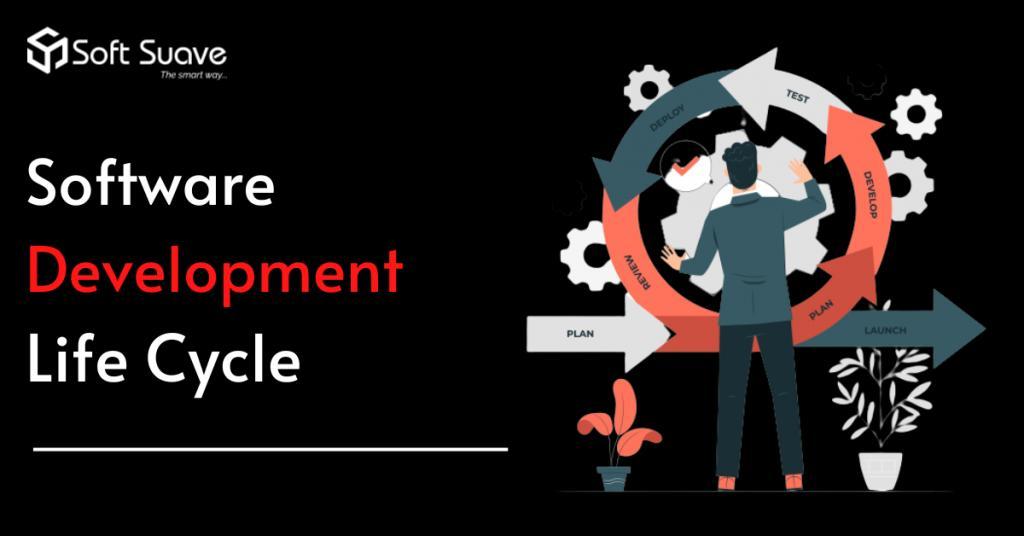

SoftwareDevelopmentLifecycle:
Softwaredevelopmentisacomplexanditerativeprocessthatrequiresa systematicapproachtoensuresuccessfuloutcomes.Thesoftware developmentlifecycle(SDLC)providesastructuredframeworkfor managingtheentiresoftwaredevelopmentprocess,frominitialplanning todeploymentandmaintenanceInthisarticle,wewilldelveintothe variousphasesoftheSDLC,exploredifferentmethodologies,anddiscuss thechallengesandfuturetrendsinsoftwaredevelopment.
TableofContent
Introduction
PhasesoftheSDLC
WaterfallModel
AgileMethodology

ChoosingtheRightSDLCModel
ChallengesintheSDLC
FutureTrendsinSDLC
Conclusion
Introduction
Thesoftwaredevelopmentlifecycle(SDLC)encompassestheentire journeyofcreatingsoftware,includingplanning,designing,coding, testing,deployment,andmaintenance.Itservesasaroadmapfor softwaredevelopersandprojectmanagerstoensuretheefficientand timelydeliveryofhigh-qualitysoftwareproductsByfollowinga structuredSDLC,organizationscanminimizerisks,controlcosts,and maintaintransparencythroughoutthedevelopmentprocess.

PhasesoftheSDLC:
RequirementsGatheringandAnalysis:-
ThefirstphaseoftheSDLCinvolvesgatheringandanalyzingthe requirementsofthesoftwareproject.Thisphasefocuseson understandingtheneedsoftheend-usersandstakeholdersand documentingthefunctionalandnon-functionalrequirements Requirementsgatheringtechniquessuchasinterviews,surveys,and workshopsareusedtocaptureacomprehensivesetofrequirements.
Design:-
Oncetherequirementsaredefined,thenextphaseisthedesignstage.In thisphase,softwarearchitectsanddesignerscreatetheblueprintforthe softwaresystem.Theydefinetheoverallstructure,modules,and componentsofthesoftwareanddeterminetherelationshipsbetween themThedesignphasealsoinvolvescreatinguserinterfacemockups andsystemarchitecturediagrams
Implementation:-
Theimplementationphaseinvolvestheactualcodingofthesoftware basedonthedesignspecificationsProgrammerswritecodein programminglanguagessuchasJava,C++,orPython,followingcoding standardsandbestpractices.Thisphasealsoincludesunittestingto identifyandfixanydefectsinthecode.
TestingandQualityAssurance:-
TestingisacrucialphaseintheSDLCthatensuresthesoftwaremeetsthe desiredqualitystandards.Testersperformvarioustypesoftesting, includingfunctionaltesting,performancetesting,securitytesting,and usabilitytestingDefectsandbugsdiscoveredduringtestingarereported, fixed,andretesteduntilthesoftwareisstableandbug-free
Deployment:-
Aftersuccessfultesting,thesoftwareisreadyfordeployment.Itis packagedandreleasedtotheend-usersordeployedonserversfor enterpriseapplicationsThisphaseinvolvesactivitiessuchasinstallation, configuration,datamigration,andusertraining.Deploymentcanbedone on-premisesorinthecloud,dependingontheprojectrequirements.
MaintenanceandSupport:-
Oncethesoftwareisdeployed,itentersthemaintenanceandsupport phaseThisphaseinvolvesmonitoringthesoftware'sperformance, addressinguserfeedback,andfixinganyissuesorbugsthatarise.Regular updatesandenhancementsaremadetoensurethesoftwareremains secureandup-to-date
WaterfallModel
ThewaterfallmodelisatraditionalsequentialSDLCmodelthatfollowsa linearandrigidapproachInthismodel,eachphaseiscompletedbefore movingontothenext,andthereisminimalroomforchangesor iterations.Thewaterfallmodeliswell-suitedforprojectswithstable requirementsandaclearunderstandingoftheendproduct

However,thewaterfallmodelhasitsdrawbacks.Itlacksflexibilityand doesnotaccommodatechangeswellIfanyissuesorchangesarise duringthelaterstagesofdevelopment,itcanbecostlyandtimeconsumingtorectifythem.Despiteitslimitations,thewaterfallmodelis stillusedincertainindustrieswherepredictabilityanddocumentationare crucial,suchasgovernmentprojectsorregulatedenvironments
AgileMethodology

Agilemethodologyisaniterativeandincrementalapproachtosoftware developmentthatemphasizescollaboration,adaptability,andcontinuous
improvement.Unlikethewaterfallmodel,agiledevelopmentdividesthe projectintosmalleriterationscalledsprints,allowingforflexibilityand feedbackthroughoutthedevelopmentprocess

Thekeyprinciplesofagiledevelopmentincludecustomercollaboration, respondingtochange,anddeliveringworkingsoftwareinshortiterations Agileteamsworkcloselytogether,communicateeffectively,and embracechangetomeetevolvingcustomerneeds.Twopopularagile frameworksareScrumandKanban,whichprovidespecificguidelinesand practicesformanagingagileprojects
Agiledevelopmentoffersseveralbenefits,includingfastertime-tomarket,increasedcustomersatisfaction,andimprovedteamproductivity Itallowsforearlyandfrequentdeliveryofworkingsoftware,enabling stakeholderstoprovidefeedbackandmakenecessaryadjustments.Agile methodologiesareparticularlyeffectiveforprojectswithdynamic requirementsoruncertainmarketconditions
ChoosingtheRightSDLCModel:
SelectingtheappropriateSDLCmodelforasoftwareprojectdependson variousfactorssuchasprojectsize,complexity,timeline,andcustomer requirementsThereisnoone-size-fits-allapproach,anddifferent projectsmaybenefitfromdifferentSDLCmodels
SomecommonSDLCmodelsincludethewaterfallmodel,agile methodologies(eg,Scrum,Kanban),iterativemodels,andhybrid models.Eachmodelhasitsownadvantagesanddisadvantages,and organizationsmustcarefullyevaluatetheirprojectneedsandconstraints beforechoosingthemostsuitableSDLCmodel

TailoringtheSDLCtothespecificprojectrequirementsisessentialfor successOrganizationscanadoptahybridapproachbycombining elementsfromdifferentSDLCmodelstocreateacustomizedprocessthat alignswiththeiruniqueneeds.Thisflexibilityallowsforamoretailored approachtosoftwaredevelopment,ensuringmaximumefficiencyand productivity
ChallengesintheSDLC:
SoftwaredevelopmentisnotwithoutitschallengesSomecommon challengesinclude:
ChangingRequirements:Requirementscanchangeorevolveduringthe developmentprocess,leadingtoscopecreepandpotentialdelays Effectiverequirementmanagementandcommunicationarecrucialto mitigatethischallenge.
ResourceAllocation:Allocatingtherightresources,includingskilled developers,testers,andinfrastructure,isessentialforsuccessfulproject executionResourceconstraintscanimpactthequalityandtimelinessof deliverables
CommunicationandCollaboration:Softwaredevelopmentinvolves multiplestakeholders,includingdevelopers,testers,designers,and
projectmanagers.Ensuringeffectivecommunicationandcollaboration amongteammembersisessentialtoavoidmisunderstandingsand ensureprojectsuccess
TechnicalComplexity:Developingcomplexsoftwaresystemsrequires expertiseinvarioustechnologiesandframeworksManagingthe technicalcomplexityandensuringscalability,security,andperformance canposesignificantchallenges.

ProjectManagement:Efficientprojectmanagementiscrucialfor deliveringsoftwareprojectsontimeandwithinbudget.Projectmanagers needtoeffectivelyplan,allocateresources,andmanageriskstoensure projectsuccess
Conclusion
Thesoftwaredevelopmentlifecycle(SDLC)providesastructured frameworkformanagingtheentiresoftwaredevelopmentprocess.By followingasystematicapproach,organizationscanensurethesuccessful deliveryofhigh-qualitysoftwareproductsFromrequirementsgathering todeploymentandmaintenance,eachphaseoftheSDLCplaysacrucial roleinachievingprojectsuccess.
